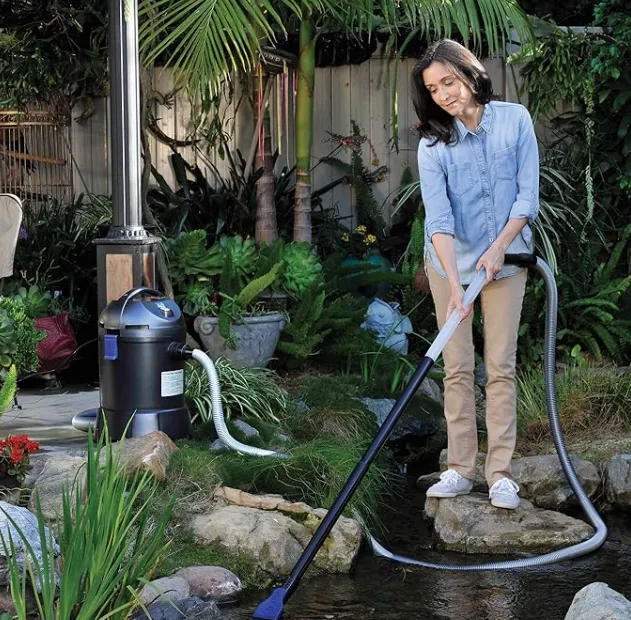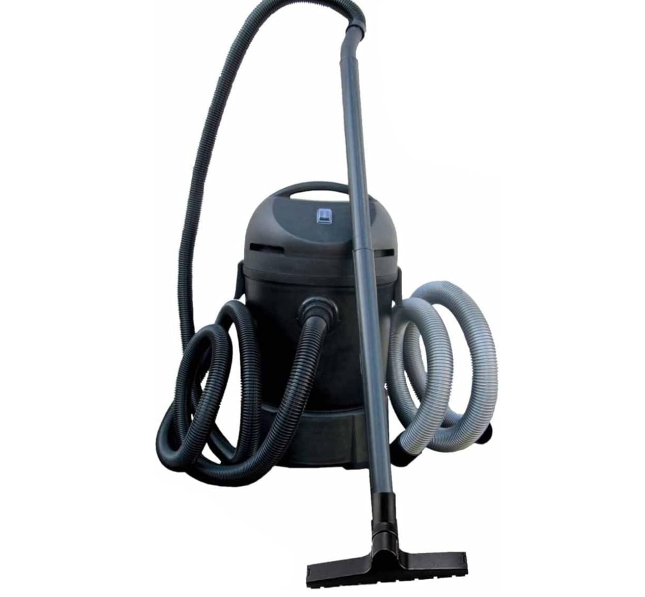

Koi Pond Vacuum: The Ultimate Guide to Crystal Clear Waters
When you envision a koi pond, you likely picture serene waters reflecting vibrant koi gliding gracefully. But here’s the truth: achieving and maintaining that tranquility requires more than just admiration. A koi pond vacuum is your secret weapon to keep your pond pristine, your koi happy, and your aquatic ecosystem thriving.
In this guide, we’ll explore everything you need to know about koi pond vacuums: their types, features, benefits, and how they can transform your pond-cleaning game.
Why Is a Clean Koi Pond Important?
Health Benefits for Your Koi
A dirty pond isn’t just an eyesore; it’s a breeding ground for bacteria, parasites, and algae. Debris like leaves, uneaten food, and fish waste can disrupt water quality, leading to stress and diseases in koi. Regular cleaning with a pond vacuum ensures a healthy, balanced environment for your fish.
Aesthetic Appeal of a Clean Pond
Let’s be honest: nothing ruins the beauty of a koi pond faster than murky water and floating debris. A clean pond enhances the visual appeal of your garden and showcases the true brilliance of your koi.
Types of Koi Pond Vacuums
Not all koi pond vacuums are created equal. Understanding the options will help you choose the best one for your needs.
Manual Pond Vacuums
- How They Work: These are operated by hand, relying on manual power and a siphoning mechanism to remove debris.
- Best For: Small ponds or spot cleaning.
- Advantages: Affordable, simple to use, and no electricity required.
- Disadvantages: Time-consuming and labor-intensive for larger ponds.
Electric Pond Vacuums
- How They Work: Powered by electricity, these vacuums use suction to remove debris quickly and efficiently.
- Best For: Medium to large ponds.
- Advantages: Fast, powerful, and effective for heavy-duty cleaning.
- Disadvantages: Higher upfront cost and requires access to a power source.
Dual-Purpose Pond Vacuums
- How They Work: These versatile vacuums can clean ponds and pools.
- Best For: Multi-purpose users.
- Advantages: Cost-effective for dual usage.
- Disadvantages: May lack specialized features for koi ponds.
Key Features to Look For in a Koi Pond Vacuum
When shopping for a koi pond vacuum, consider these essential features:
1. Suction Power
A vacuum’s suction power determines its ability to remove stubborn debris and sludge. Opt for models with adjustable suction to cater to varying pond depths and debris types.
2. Hose Length and Flexibility
A longer hose provides better reach, especially for larger ponds. Ensure the hose is durable and kink-resistant for smooth operation.
3. Filtration System
An effective filtration system traps debris without allowing it to recirculate into the water. Look for models with multiple filter options for optimal performance.
4. Portability and Design
Lightweight and portable vacuums are easier to maneuver around your pond. Consider models with wheels or ergonomic handles for added convenience.
5. Power Efficiency
Choose energy-efficient models to minimize environmental impact and reduce operating costs.
How to Use a Koi Pond Vacuum Effectively
Preparation Steps
- Remove large debris like leaves with a net.
- Adjust your vacuum’s settings based on pond size and depth.
- Ensure your koi are calm by avoiding loud noises or sudden movements.
Vacuuming Technique
- Start at the shallow edges and gradually move to deeper areas.
- Avoid over-vacuuming to maintain beneficial bacteria.
- Use slow, steady movements for thorough cleaning.
Maintenance Tips for Your Koi Pond Vacuum
Proper maintenance extends the lifespan of your vacuum and ensures peak performance:
- Clean the Filters Regularly: Rinse filters after each use to prevent clogging.
- Check for Damage: Inspect hoses, nozzles, and other components for wear and tear.
- Store Properly: Keep the vacuum in a dry, cool place to avoid rust or damage.
- Replace Parts as Needed: Invest in replacement parts for long-term efficiency.
Top Brands and Models of Koi Pond Vacuums
1. OASE PondoVac Series
Known for their high-quality and versatile designs, OASE PondoVac models are a favorite among koi enthusiasts.
2. Matala Pond Vac II
This lightweight yet powerful vacuum is ideal for medium-sized ponds and offers excellent value for money.
3. Blagdon Pond Monsta
With a focus on portability and efficiency, this vacuum is perfect for smaller ponds and easy-to-handle tasks.
DIY vs. Professional Pond Cleaning
DIY Cleaning
- Benefits: Cost-effective, allows you to maintain control, and is a great way to bond with your pond.
- Best For: Regular maintenance and small ponds.
Professional Cleaning
- Benefits: Experts handle complex issues like algae blooms, sludge buildup, and water chemistry.
- Best For: Large ponds or ponds with severe contamination.
How Often Should You Vacuum Your Koi Pond?
- Seasonal Cleaning: Vacuum more frequently during fall to remove fallen leaves.
- Regular Maintenance: For most ponds, a bi-weekly cleaning schedule is sufficient.
- Pond Size and Usage: Adjust frequency based on your pond’s size, number of koi, and debris levels.
Common Mistakes to Avoid
- Overusing the Vacuum: Excessive cleaning can disrupt the pond’s natural ecosystem.
- Ignoring Filter Maintenance: Dirty filters reduce vacuum efficiency.
- Disturbing the Koi: Use a gentle approach to avoid stressing your fish.
- Skipping Regular Cleaning: Infrequent cleaning leads to debris buildup and water quality issues.
Environmental Impact of Koi Pond Vacuums
Eco-conscious pond owners can minimize their impact by:
- Choosing energy-efficient models.
- Avoiding chemical cleaners that harm aquatic life.
- Using biodegradable disposal methods for debris and sludge.
FAQs
1. What is the best koi pond vacuum for beginners?
The OASE PondoVac Classic is beginner-friendly with straightforward functionality and reliable performance.
2. Can I use a shop vacuum for my koi pond?
While possible, shop vacuums lack the specialized features of pond vacuums, making them less effective and potentially harmful to koi.
3. How do I maintain my pond between vacuuming sessions?
Skim the surface for floating debris, trim aquatic plants, and monitor water quality regularly.
4. Are pond vacuums safe for fish and plants?
Yes, when used correctly. Avoid direct suction on fish or delicate plants to prevent harm.
5. What is the lifespan of a koi pond vacuum?
With proper care, a high-quality vacuum can last 5-10 years.
A koi pond vacuum is more than just a tool—it’s an investment in the beauty, health, and longevity of your pond. With the right vacuum and a consistent cleaning routine, you’ll enjoy sparkling waters and thriving koi year-round.
You may also like
- https://giobelkoicenter.com/koi-fish-flags/
- https://giobelkoicenter.com/how-many-koi-fish-is-lucky/
- https://giobelkoicenter.com/koi-pond-liners/
- https://giobelkoicenter.com/how-to-start-a-koi-pond-a-comprehensive-guide/
- https://giobelkoicenter.com/how-big-do-koi-fish-get/
- https://giobelkoicenter.com/how-often-should-you-feed-koi-fish/